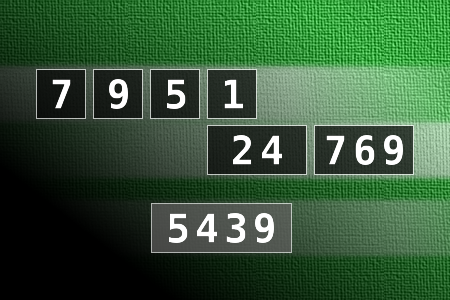Calculate the number 5439
NUMBERMANIA: Calculate the number 5439 using numbers [7, 9, 5, 1, 24, 769] and basic arithmetic operations (+, -, *, /). Each of the numbers can be used only once.Correct answers: 2
#brainteasers #math #numbermania

